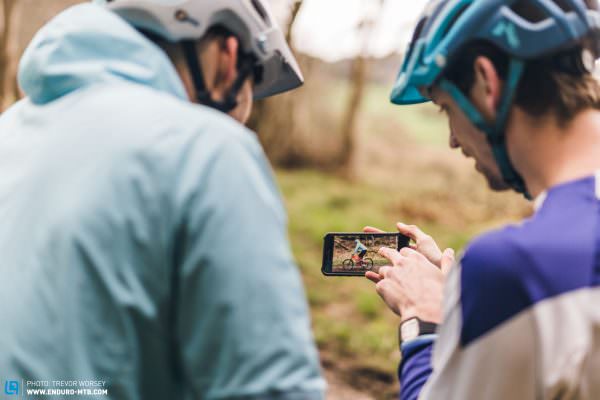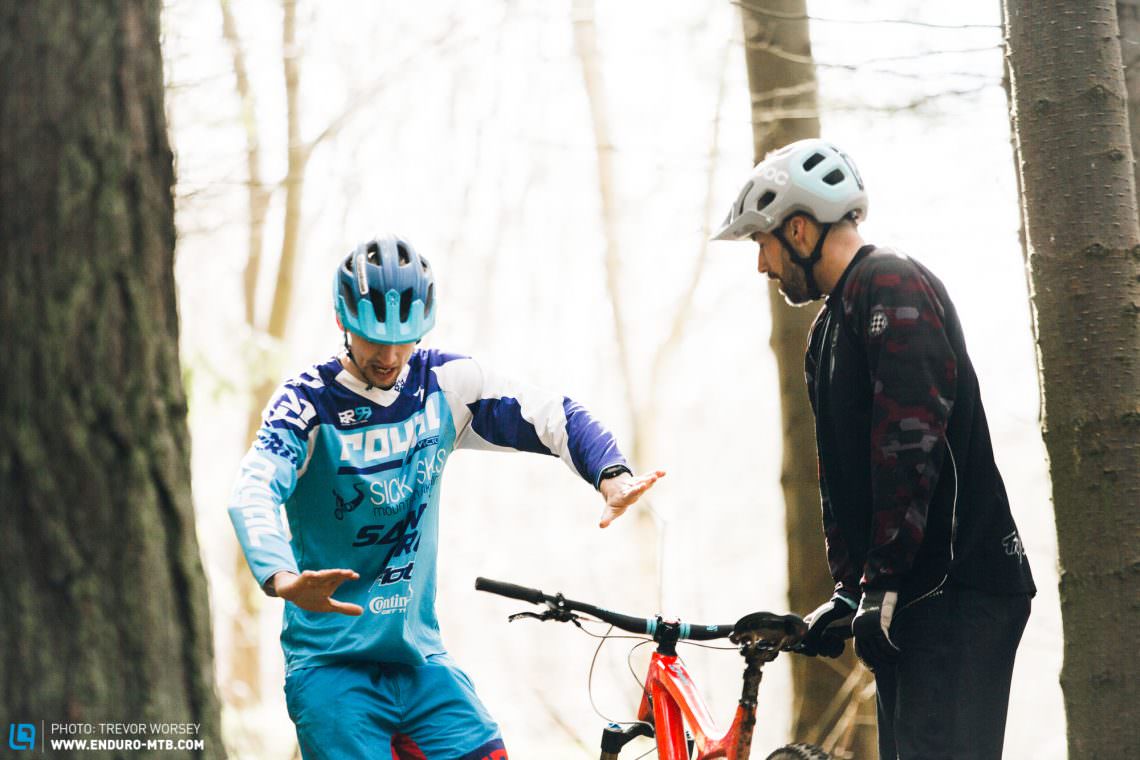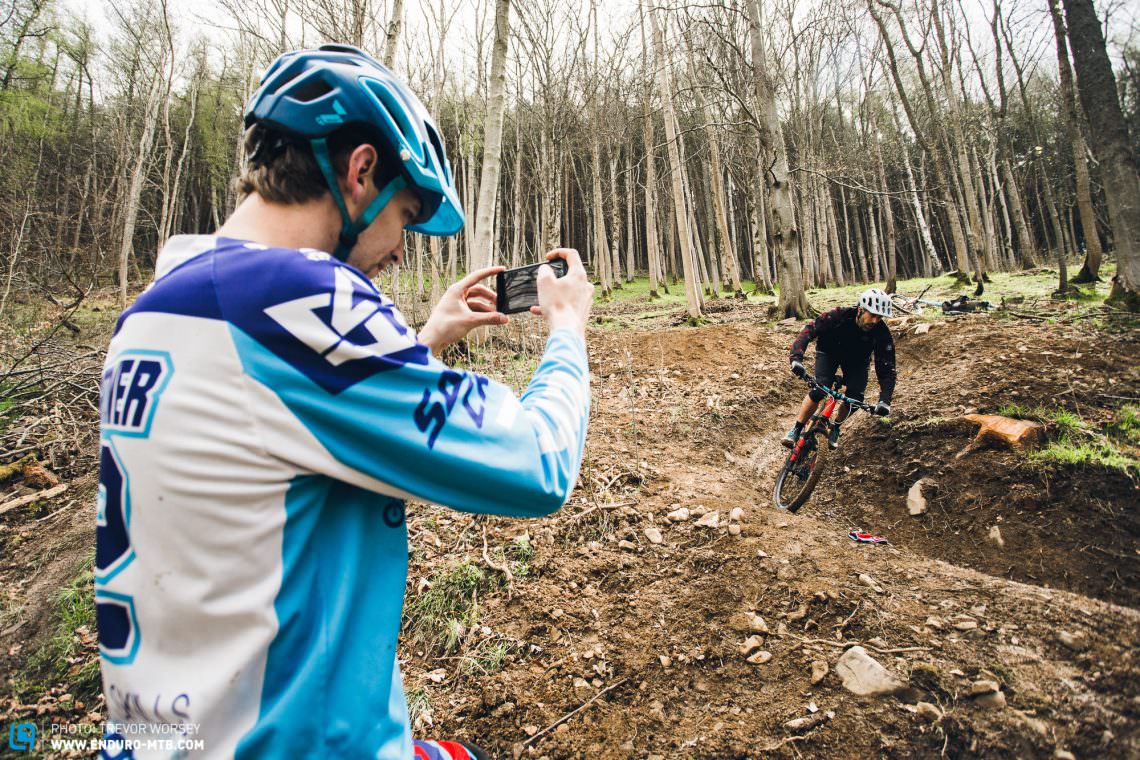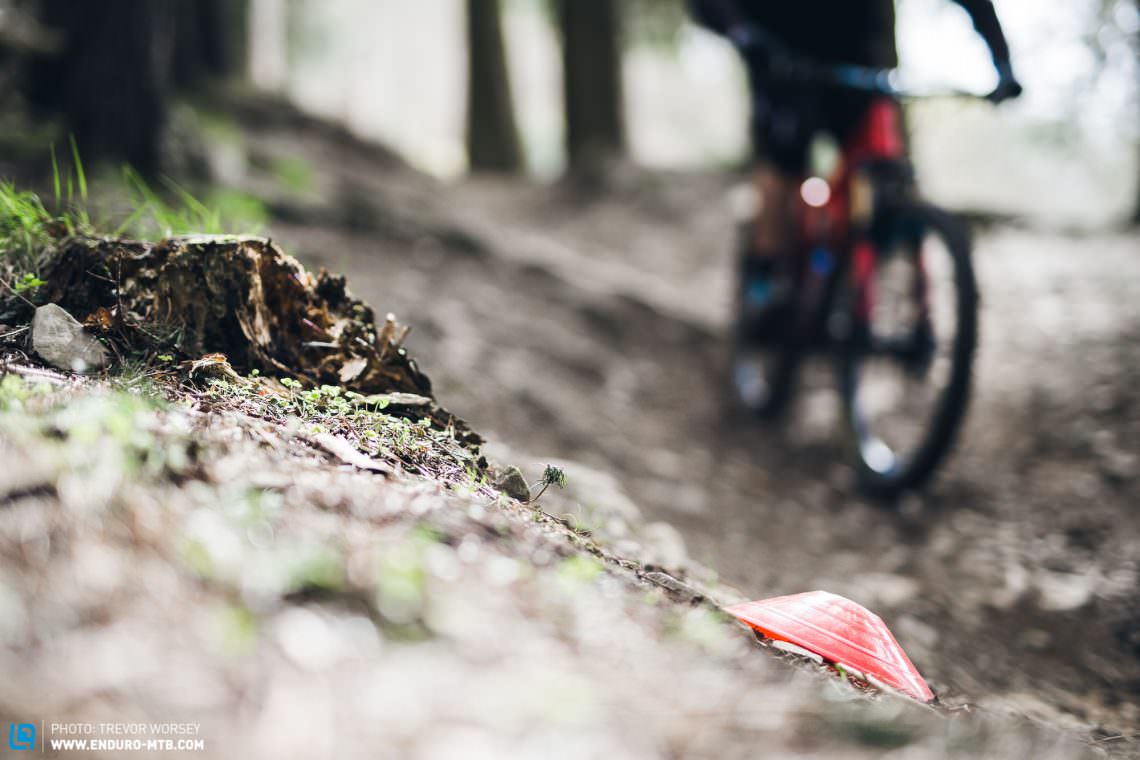From hero to zero, everyone wants to ride better. You can spend thousands on your bike, making sure you have the latest dampening cartridge or carbon bottle cage to knock a 100th of a second off your Strava time or, for the price of a big round of beers, you could afford the services of a mountain bike coach and learn skills that will take your riding to the next level no matter what bike you ride.

Pro’s wouldn’t think twice about using coaches to hone their already considerable skills in order to gain vital tenths of a second off their race run: for the average joe rider (like myself), the potential performance gains are even greater. After moving to the Scottish Borders a few years ago, the terrain I rode on a daily basis was pushing my skill-set to the limits, I needed to freshen up my riding to get the most out of my rides. Improving your skills will make riding more rewarding, more fun and much safer as you become more confident in your ability, more in-tune with your bike and better able to adapt your riding to the terrain.
I asked YouTube legend, Pro-rider and owner of Sick Skills MTB coaching, Ben Cathro to join me on my home trails to see if he could upgrade my riding in a day.
Body Positioning
First on the agenda was body positioning. When the going gets rowdy, properly positioning your body on the bike will give you maximum traction and the ability to absorb terrain as effectively as possible.

Ben’s body positioning checklist
- Small Bend in knees
- Bend forward at hips
- Light Pressure on your palms
- Elbows out!
- Eyes up looking where you need to go
Video analysis allows you to really see how you can improve your riding
To highlight what I was doing wrong, Ben filmed me on a run and quickly points out that my legs are too bent and my weight needs to be further over the bars. Under heavy braking my weight would come off my hands and onto the back wheel as my legs bent further, reducing vital traction on the front wheel and making it impossible to commit to the turn.


Unpicking what you’ve been doing subconsciously for decades is not an easy ask. By thinking about one area of your riding, another gets forgotten; only by slowing down was I able to counter that instinct and put it all together. After a few runs, something clicks and I can immediately feel the difference in control.
Bike Movement
With the fundamentals much improved, we increase the severity of the terrain and look at controlling bike movement. Ben’s mantra is, ‘Be a Boss!’, when faced with rough terrain; commit to each section by riding offensively. When the ground falls away, use your head over the bars and elbows bent position to push your bike down and fill the trail. By compressing, squashing and pumping through sections, your bike’s contact with the ground is maximised, giving you greater control and ultimately more speed – the bike moves, the body glides.
How to be a Boss
- Own the trail, attack each section.
- When the ground falls away, push the bike away hard to keep tyres on the ground.
- If features are bigger, (big steps/fadeaways), than the amount of room you have, prepare by crouching low just before the obstacle.
- If you feel yourself getting bounced around you’ve either tensed up or not prepared properly.

It appears that my approach is not very boss like; I’m riding defensively, shifting my weight back and riding off the back wheel. I would always manual or jump every lump and bump; fun but without tyres on the ground to brake or turn this would sometimes get me in trouble, especially when travelling at speed or down the steep stuff.

The goal is to keep my head steady as the bike compressing into trail features underneath me. I quickly find that a strong upper body is essential for long runs as my weight has come off my legs but is now being transferred via my shoulders and arms. After a few runs to gain confidence, my speed is quickly increasing as the bike accelerates through our root section and drop but with my wheels firmly on terra firma I’ve got the traction and the time to fully control the bike as I head into the approaching corner…
Cornering
My technique was either hammer in, try and stick the line while feathering brakes then pedal hard on exit as I’d lost all my speed or drag the brakes throughout the turn to try and control my speed. Both strategies were slow and robbed me of momentum and traction when I needed it most.

To be fast out of corners, you have to be controlled going in. Once I was consistently approaching the bends using the correct body positioning and bike movement, Ben showed me how to use the control I now had to improve my exit speed. The secret is knowing when to brake and when to release so you set up for the turn at a speed that allows you to focus the exit, leading with your eyes so that your body leans into the corner. We find a tight, off-camber turn with no support to practice on; its fast approach requires me to hammer on the brakes to slow me almost to a stop before going in, off brakes. On the first run I can feel the grip and hear the breakaway point as my bike goes into a two-wheel drift but because I’m looking hard to the exit and relaxed in my new centred body position, I comfortably keep the tight line as my bike shoots out of the corner.
Tips for Cornering
- Controlled in, fast out!
- Brake before the turn if you need to.
- Get off the brakes at the start of the turn and commit. If you can’t then feather the brakes until before the corner’s apex.
- Just before the apex, LOOK to the exit and RELEASE the brakes.
- If you struggle to commit, slow down more before the release point.
It’s hard to restrain myself and not try to increase the speed before I’m ready. More runs give mixed results but it’s clear that the coaching is working.
Vision
Scanning the trail and line choice are next on the agenda. Ben’s top tip is, “Look at where you want to be, not where you are; the faster you go, the further you need to look! ” Great advice and something that most riders are guilty of, especially when things get lairy.

As you ride the trail, keep scanning ahead to upcoming sections and, as you hit a line, look to the next. Let your body and bike take care of the present, your eyes can then peer into the future and keep you ahead of the game. This technique would have a very limited success rate without the skills and confidence I’ve built up from our previous sessions, as it is I initially find it tricky to not focus on what’s under my tyres. Success breeds success and each time I commit fully, I’m rewarded with a pinned line and a further boost to my confidence.
Vision is the key to unlocking line choice; and will help you hold lines you previously thought impossible! Too many times have I cursed my line choice, whether hitting a section too fast to hold the line or getting locked in, staring at the part of the trail that I want to avoid, I definitely needed some help here!

Ben’s tip is, “Make it easy, then you can go faster!” Sounds simple but sticking fast lines will require combining all the aspects of my coaching. We walk a few technical lines and discuss what makes them hard; are they tight, rooty, steep etc… then we problem solve, can we make them easier by taking a different line? There are some lines when you only have two options; commit or avoid. Ben’s approach to committing will require all my confidence
The focus should be the line, not the obstacle. Use what we learnt about vision and look through the section at where you want to end up, don’t target fixate! If the section is do or die, setup, look beyond to safety and get off the brakes. Confidence is everything and fingers crossed, you’ll nail it!

- If something is hard, figure out why. Make it easier or miss the obstacle.
- Spot your line, soon as you know your going to hit it, look for the next one.
- Don’t target fixate on what you don’t want to hit.
- If you have to hit a commit or die feature, line it up, look beyond it and get off the brakes.
Conclusion
Aside from it being a great experience, one day of being coached gave us so many ways to improve our riding. Small tweaks to technique can make big differences to control and speed but the confidence you build as a result of the coaching is the real game changer. We can’t think of a better upgrade for riding than coaching!
We would like to thank Ben Cathro for his expert coaching. If you want to brush up your skills, we would highly recommend a session with Ben. Check out his website at sickskills.co.uk
Did you enjoy this article? If so, we would be stoked if you decide to support us with a monthly contribution. By becoming a supporter of ENDURO, you will help secure a sustainable future for high-quality mountain bike journalism. Click here to learn more.
Words: Thomas Corfield Photos: Trev Worsey








